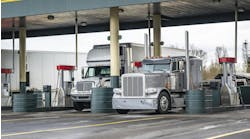Clark: The three phases to getting workforce buy-in for major changes
Change is inevitable, but it’s never easy, especially when it comes to significant changes within an organization. At a recent NationaLease event, Ryan Schreiber, chief growth officer at Metafora, spoke about the need for digital transformation and how to make that initiative a success effectively. This last point is essential since Schreiber noted that, according to a 2021 study, 70% of digital transformations fail. That’s a stunning number, and although there are multiple reasons for the failure, Schreiber attributes insufficient change management as a major culprit.
If you don’t think change management matters, here’s an eye-opening fact: Initiatives with solid change management programs were six times more likely to meet objectives and five times more likely to be on schedule. Changes like digital transformation are expensive, so ensuring that your workforce is not only on board but also invested in the venture’s success is vitally important. That means involving the workforce before making any changes.
See also: Clark: Why change management is so difficult
Managing change in three phases
In his presentation to NationaLease, Schreiber noted that successful change management requires three phases.
Preparing for change
Your team needs to know what the change is and why it’s happening. When you enumerate the benefits, the company as a whole will realize you also need to inform them of the risk of not changing. Make clear how the change will make the organization competitive.
Managing change
To get support, let the staff know how they will benefit. This is where you can break down the barriers that may inhibit change. Make it clear that this transformation will make their jobs easier and more efficient. They’ll be able to be more productive, especially once they see how the technology will reduce time-consuming manual processes that they may currently be using. At this point, you reveal the knowledge, skills, and behaviors required during and after the implementation, including how to adopt and use the tool effectively. Most importantly, let the staff know that they play an integral role in guaranteeing the eventual success of the initiative. Acknowledgement is a powerful motivator.
Reinforcing change
Sometimes, the new technology doesn’t fail; it just doesn’t get optimized. Workers who are uncomfortable adopting this technology tend to revert to old habits. That can mean using only certain capabilities of digital technology while still relying partially on manual processes they are familiar with. That’s why management must reinforce the change once the digital transformation is in place. That means developing ongoing training programs, providing necessary resources, offering incentives, and clarifying how adoption can lead to career advancement.
Every phase of change management requires communication. Workers need to know they can bring concerns and problems to management at every step. They need to know that mistakes will likely happen, so don’t fear them. Good leadership is the foundation of successful change management.



